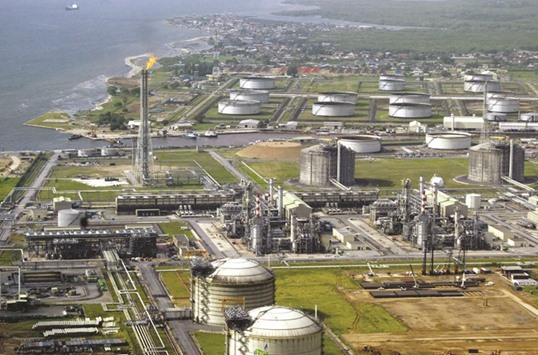Speculators became the most bullish on oil since June as a meeting of major producers next month may yield an agreement to cap output.
Futures surged 11% in two days after Qatar’s Energy Minister said on March 16 that some Opec members agreed to meet with other producers in April to resume talks on freezing supply. US output sank to a 16-month low as a record decline in drilling started to take hold. The rally accelerated after the US Federal Reserve reduced its outlook for interest rates, sending the dollar tumbling.
“There’s no doubt the market is moving on the prospect of the meeting,” said John Kilduff, a partner at Again Capital, a New York-based hedge fund that focuses on energy. “This could usher in a new phase in cooperation between Saudi Arabia, the rest of Opec and other producers to stabilise the supply situation. If nothing solid comes from the meeting, the market will move the other way.”
Hedge funds and other speculators increased their net-long position in West Texas Intermediate futures and options by 17% in the week ended March 15, according to US Commodity Futures Trading Commission data. WTI slipped 0.4% to $36.34 a barrel in the report week on the New York Mercantile Exchange.
Oil surged more than 50% since a mid-February proposal by Saudi Arabia, Russia, Venezuela and Qatar to cap oil output and reduce a worldwide surplus that pushed prices down to the lowest level in almost 13 years. The summit in April would seek commitments from a wider range of producers both within and outside the Organisation of Petroleum Exporting Countries.
The US Federal Reserve’s decision last Wednesday to set a higher bar for when it may raise rates again sparked demand for riskier assets. The dollar dropped, boosting the appeal to investors of raw materials priced in the US currency.
US crude production in the week ended March 11 sank to the lowest since November 2014, according to the Energy Information Administration. Rigs targeting oil in US fields are down by 76% since October 2014, Baker Hughes Inc data show.
“There’s a feeling that the very low rig count is bringing some balance to the market,” said Michael Lynch, president of Strategic Energy & Economic Research in Winchester, Massachusetts. “Market momentum is leading to more length and punishing the shorts. Traders seem to believe this bounce will last.”
In other markets, net bearish wagers on US ultra low sulphur diesel decreased 11% to 18,946 contracts. Diesel futures fell 1.9% in the period. Net bullish bets on Nymex gasoline climbed 15% to 33,949 contracts, the highest level in a year, as futures advanced 1.5%.
Speculators’ short positions, or bets that WTI prices will decline, tumbled 20% to the lowest since June. Longs climbed 2.4%, the biggest gain in six weeks. “The fact that the rise in net length was mostly the result of short covering reduces the quality of the buying,’ said Tim Evans, an energy analyst at Citi Futures Perspective in New York. “Rising long positions are a stronger endorsement of the market, because they are an active bet on rising prices.”

File picture shows Shell Oil’s oil and gas terminal on Bonny Island in southern Nigeria’s Niger Delta. Oil surged more than 50% since a mid-February proposal by Saudi Arabia, Russia, Venezuela and Qatar to cap oil output and reduce a worldwide surplus that pushed prices down to the lowest level in almost 13 years.


